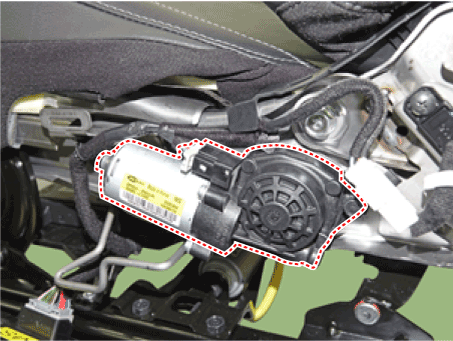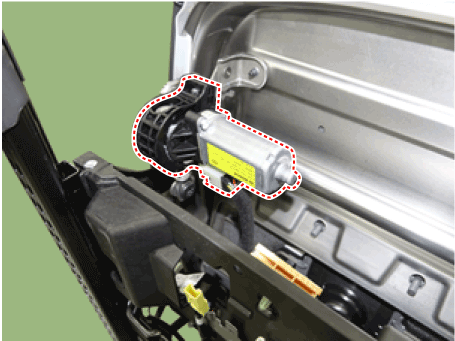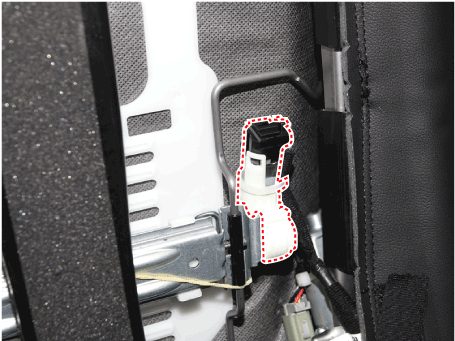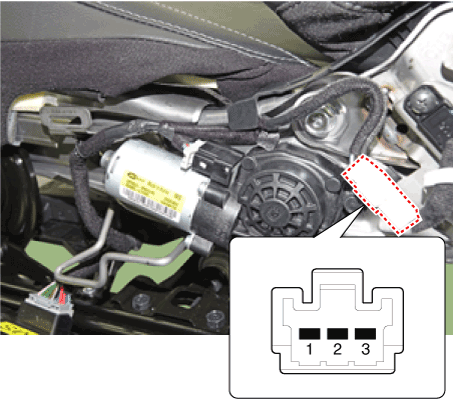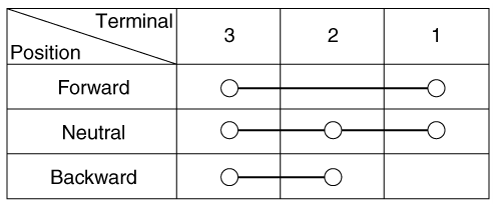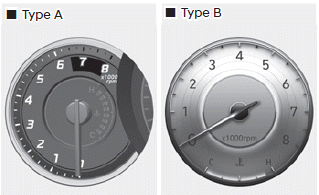Hyundai Elantra: Seat Electrical / Power Seat Motor
Hyundai Elantra (CN7) 2021-2025 Service Manual / Body Electrical System / Seat Electrical / Power Seat Motor
Components and components location
| Component Location |

| 1. Lumber support motor 2. Reclining motor 3. Front height motor 4. Slide motor | 5. Rear height motor 6. Reclining limit switch 7. Lumber support switch 8. Seat switch |
Repair procedures
| Inspection |
Power Seat Motor
| 1. | Disconnect the connectors for each motor. [Slide Motor]
[Rear Height Motor]
[Front Height Motor]
[Reclining Motor]
[Lumbar Support Motor]
|
| 2. | With the battery connected directly to the motor terminals, check if the motors run smoothly. |
| 3. | Reverse the connections and check that the motor turns in reverse. |
| 4. | If there is an abnormality, replace the motors. |
[Reclining Motor Limit Switch]
|
| 1. | Disconnect the limit switch and operate the limit switch. |
| 2. | Check for continuity between the terminals. |
| 3. | Make sure that the seat operation is normal in the reverse after the maximum operation. |
| 4. | If there is an abnormality, replace the limit switch.
|
| Remove |
Front Seat
| 1. | Disconnect the battery terminals. |
| 2. | Remove the front seat assembly. (Refer to Body - "Front Seat Assembly") |
 Power Seat Control Switch
Power Seat Control Switch
Repair procedures
Removal1.Disconnect the negative (-) battery terminal.2.Remove the front seat outer shield cover.(Refer to Body - "Front Seat Outer Shield Cover")3...
Other information:
Hyundai Elantra (CN7) 2021-2025 Owner's Manual: Rear seat head restraints
The rear seats are equipped with head restraints in all the seating positions for the passenger’s safety and comfort. Adjusting the height up and down To raise the head restraint: 1. Pull it up to the desired position (1). To lower the head restraint: 1...
Hyundai Elantra (CN7) 2021-2025 Service Manual: Troubleshooting
Basic TroubleshootingBasic Troubleshooting GuideCustomer Problem Analysis SheetBasic Inspection ProcedureMeasuring Condition of Electronic Parts' ResistanceThe measured resistance at high temperature after vehicle running may be high or low. So all resistance must be measured at ambient temperature (20°C, 68°F), unless stated otherwise...
Copyright © 2025 www.helantra7.com


